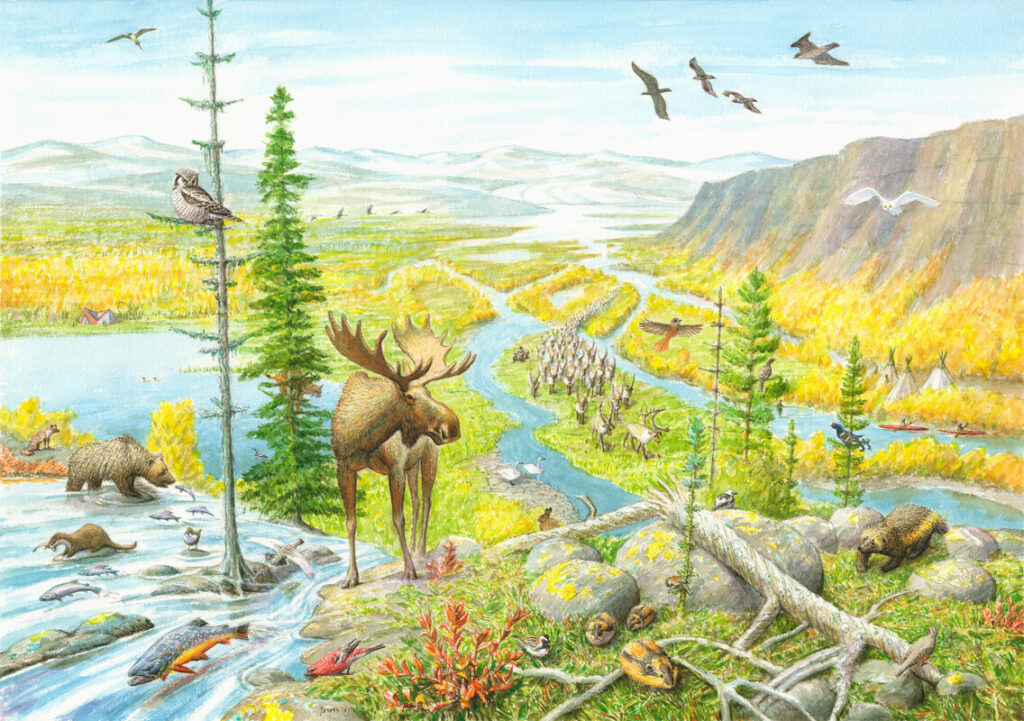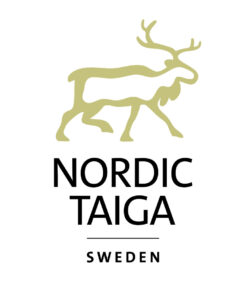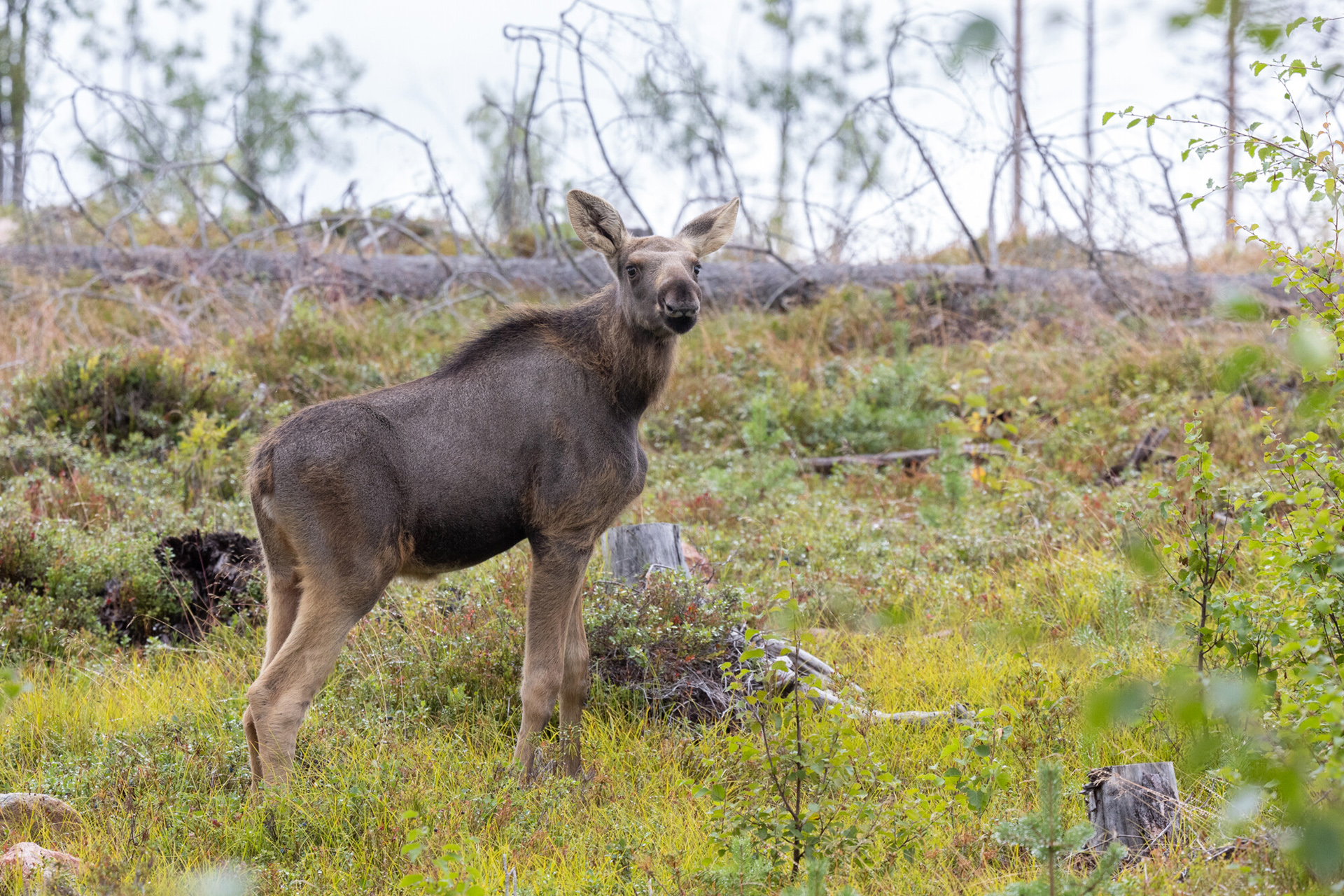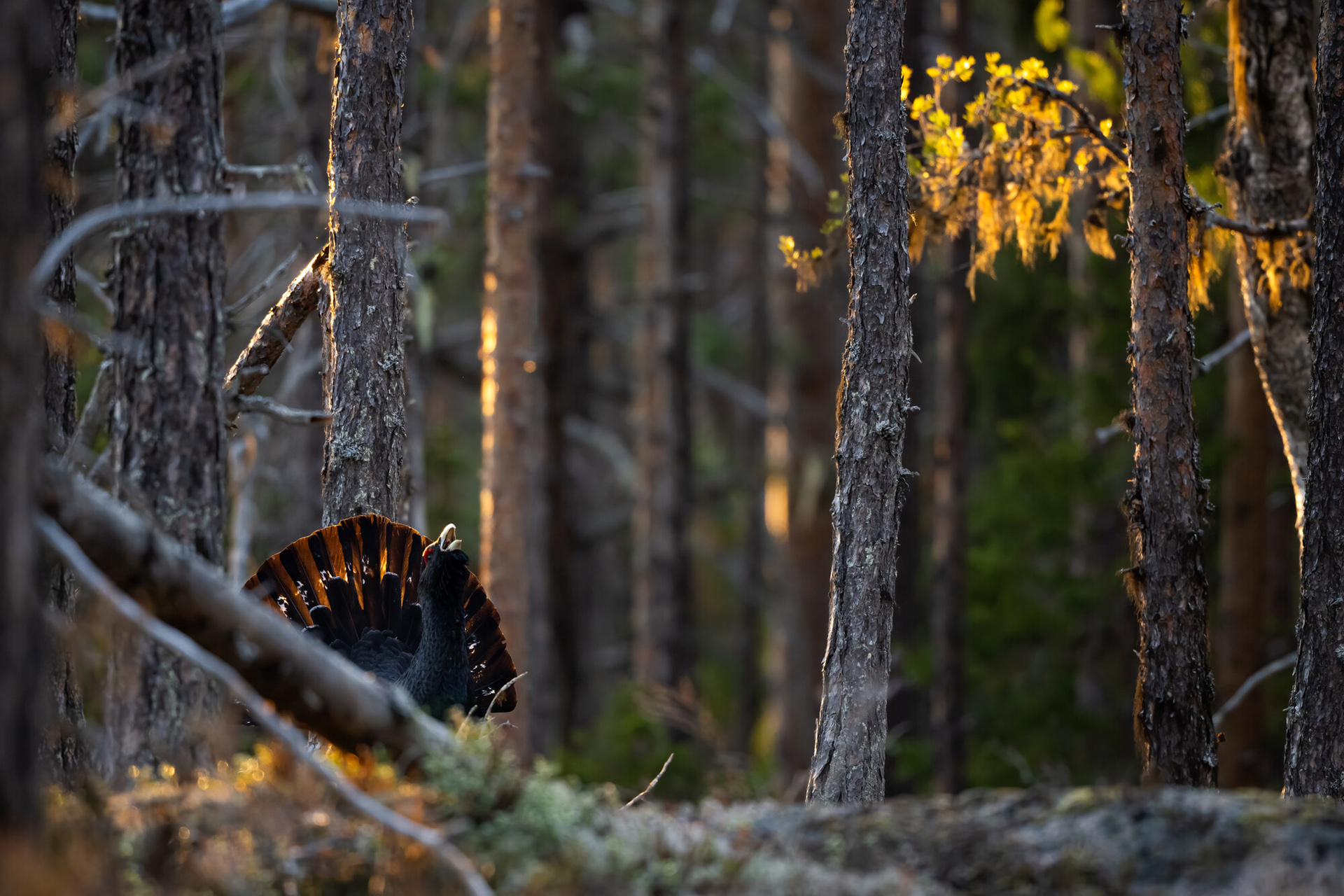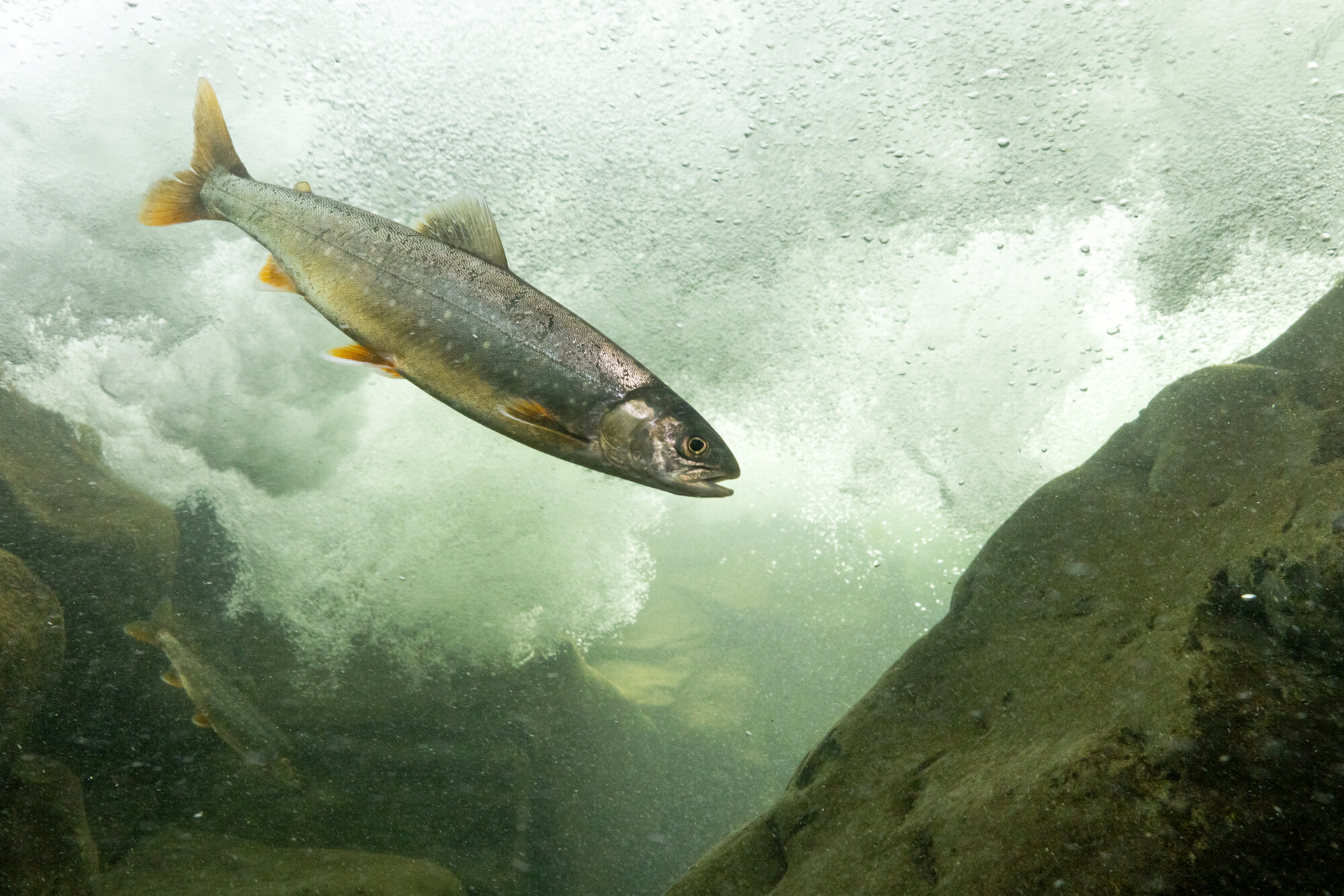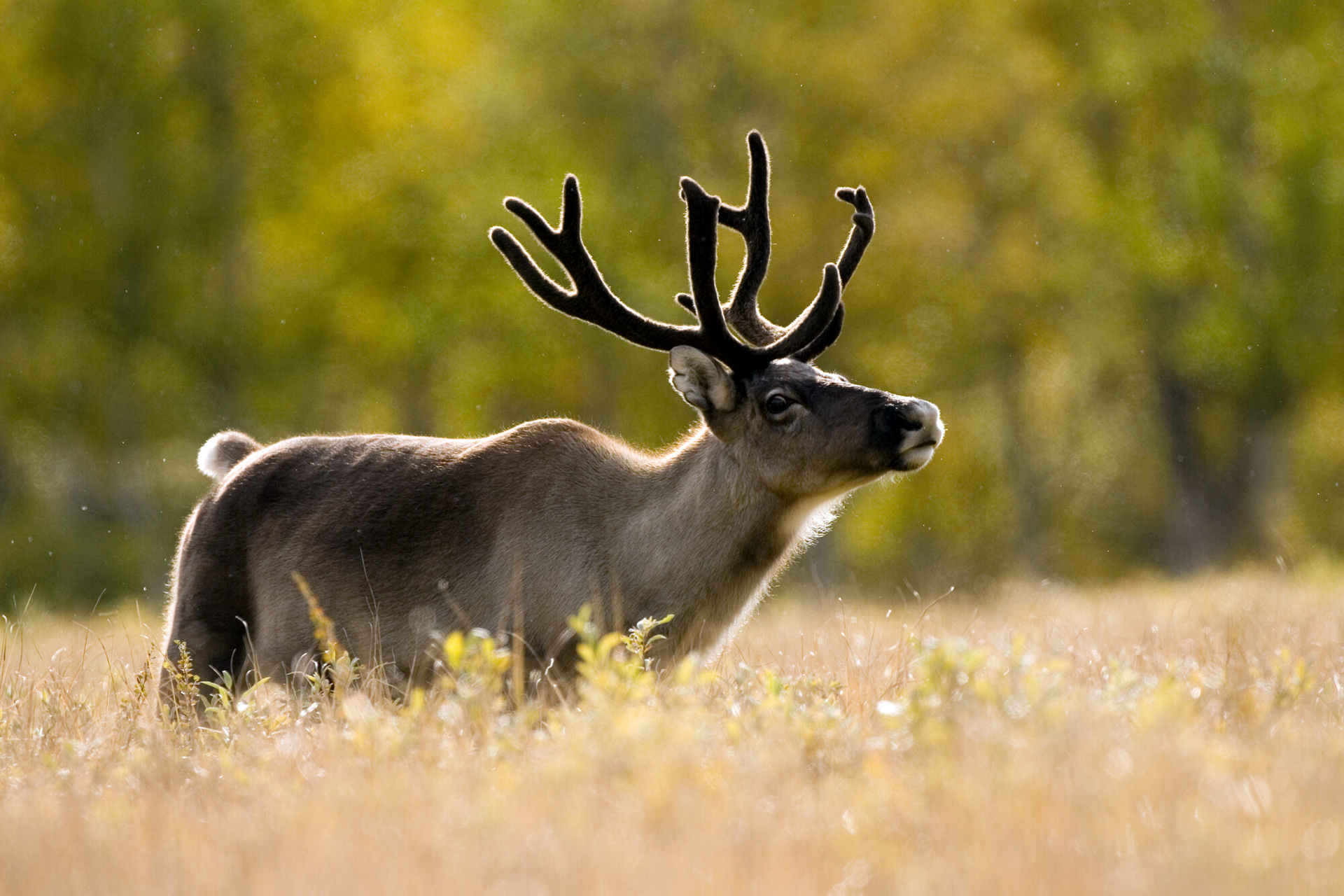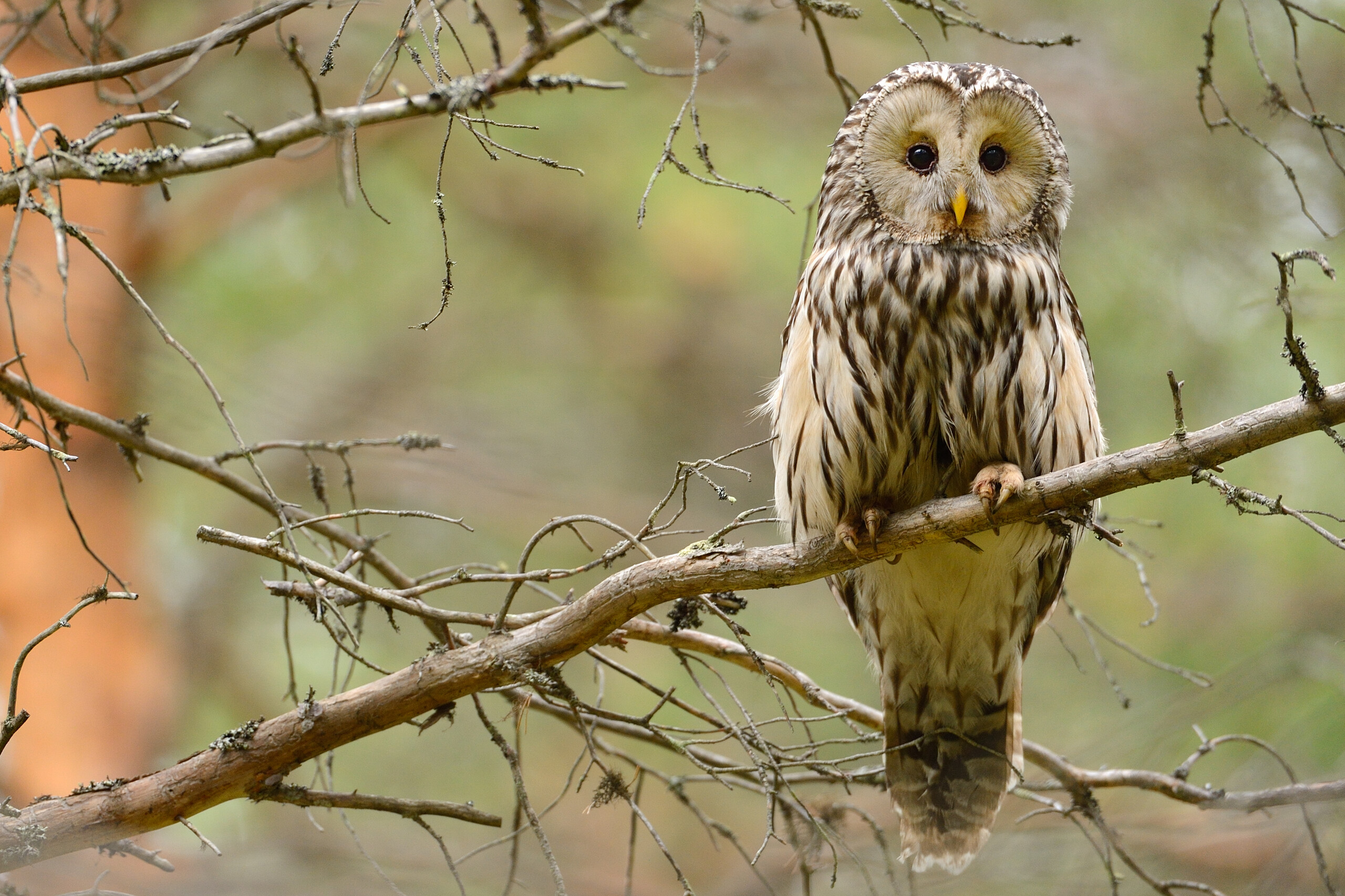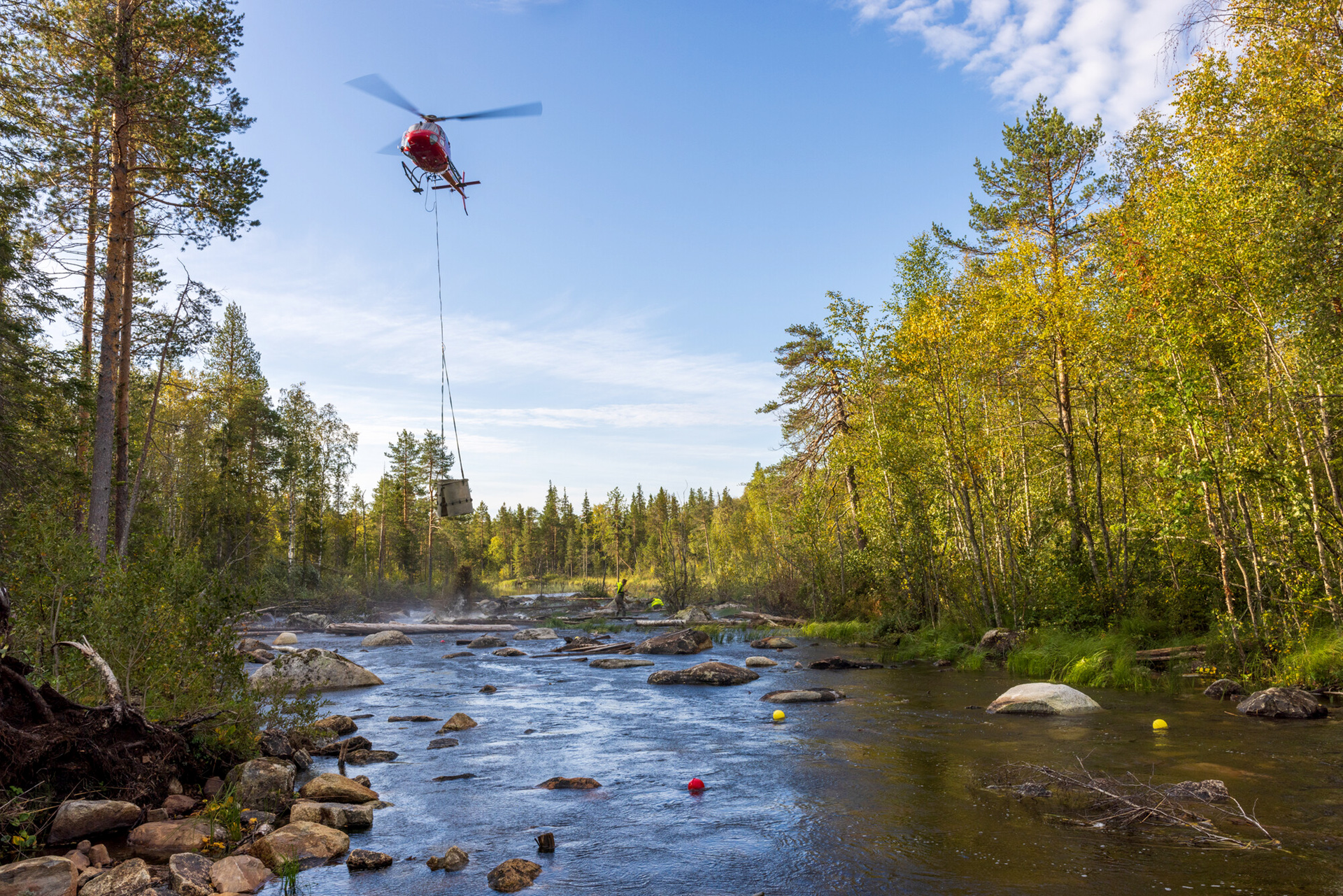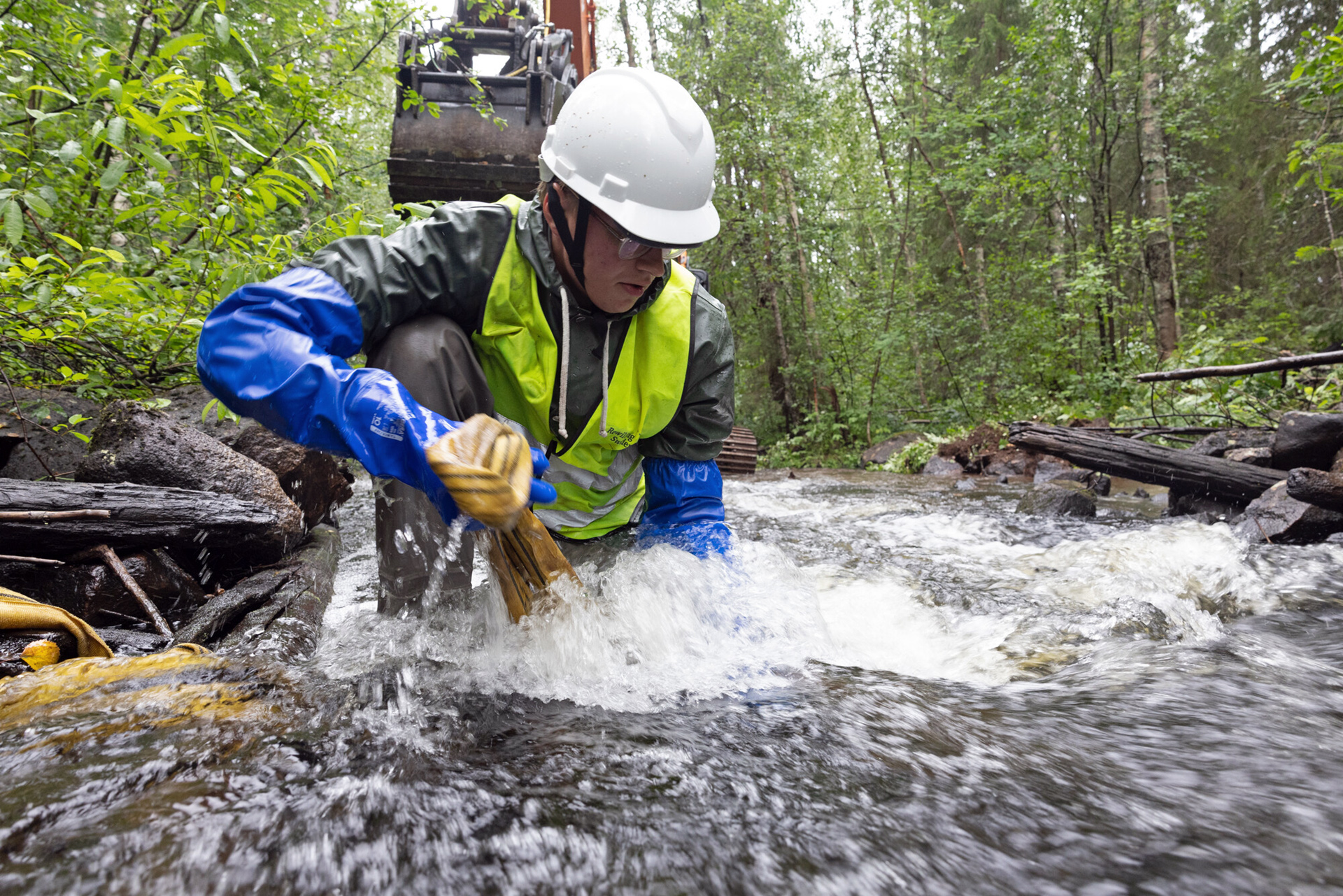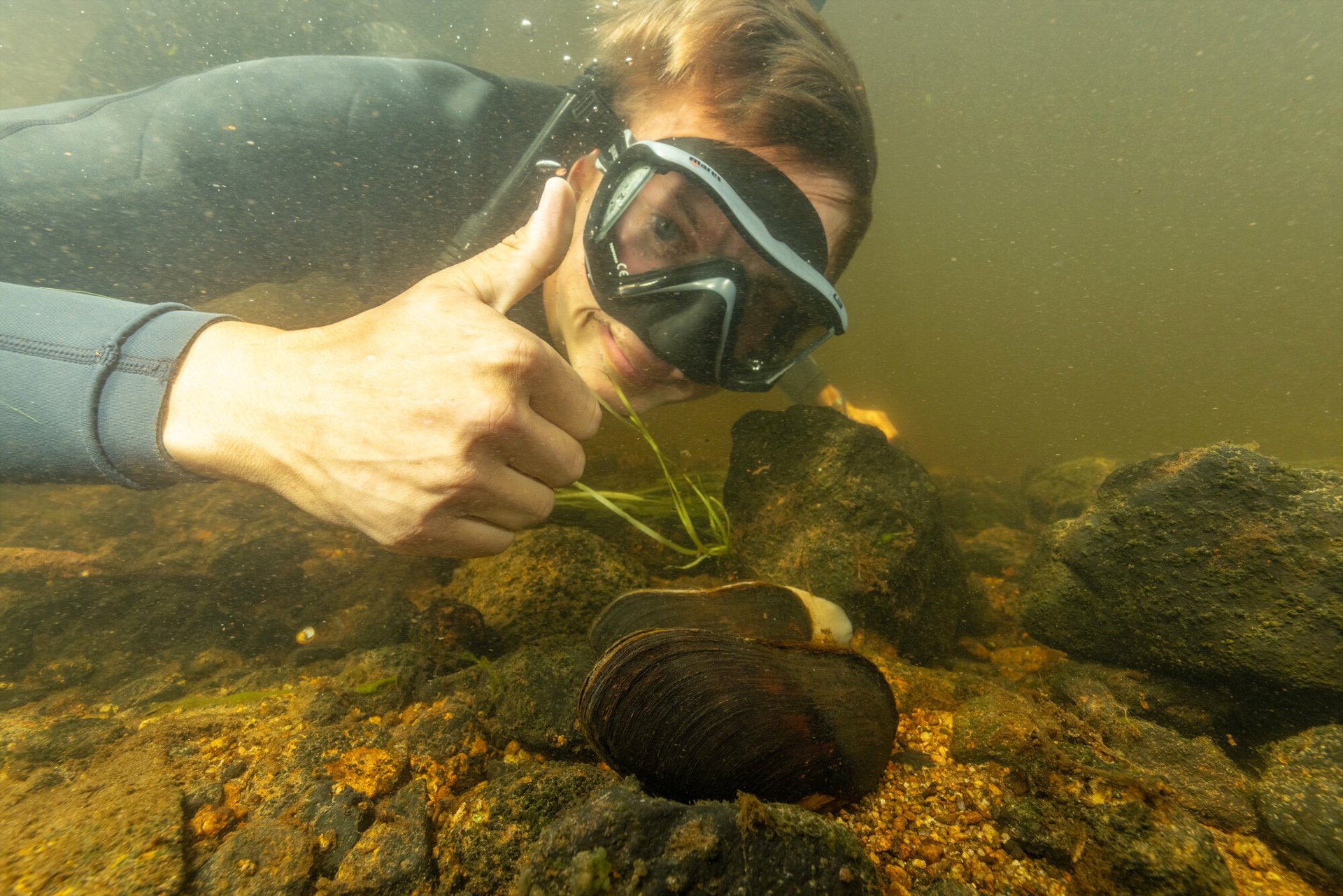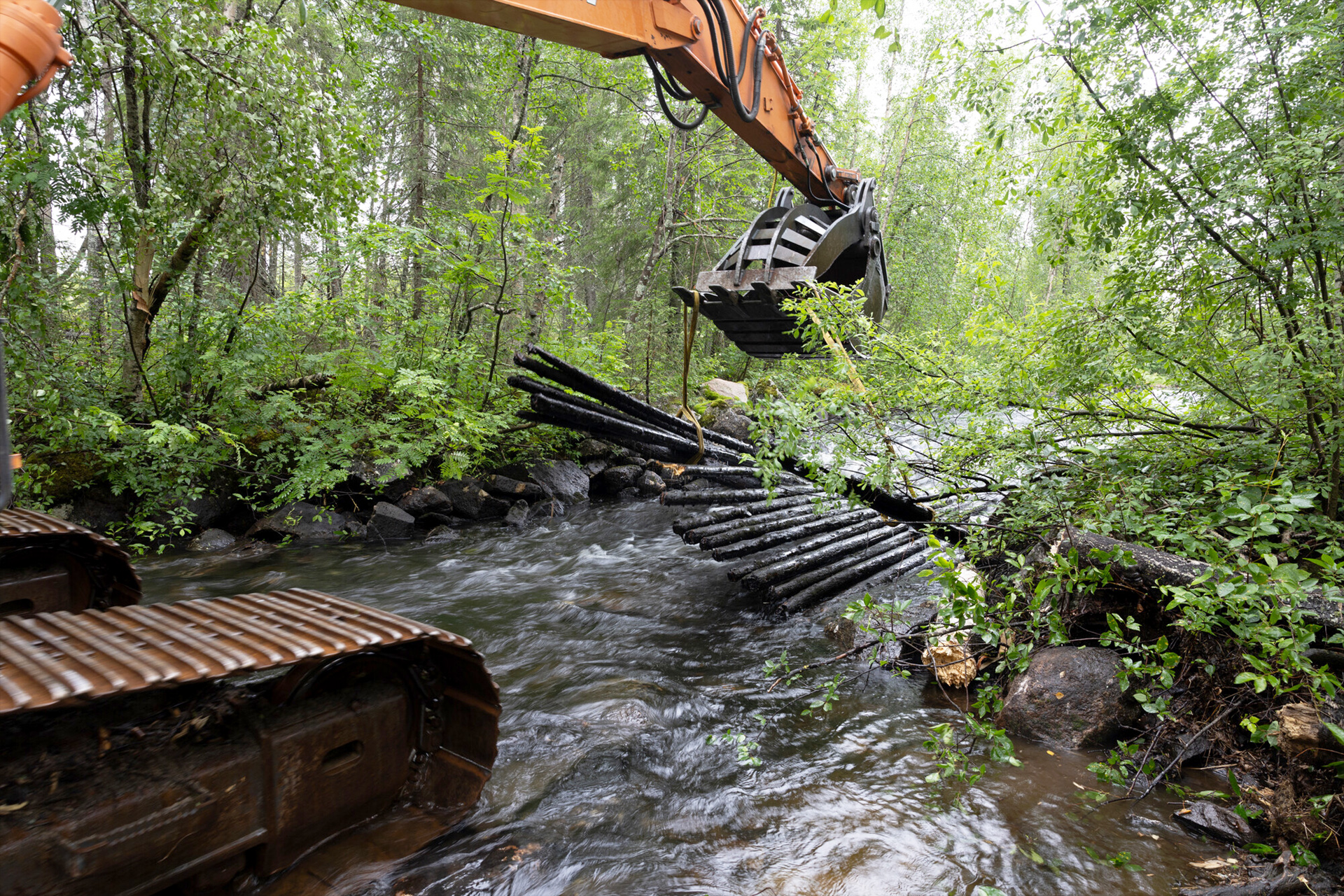The renaming of the Nordic Taiga rewilding landscape ushers in an exciting new chapter for rewilding in northern Sweden. The change emphasises Rewilding Sweden’s commitment to revitalise natural processes, support wildlife comeback, and forge deeper connections between people and nature.
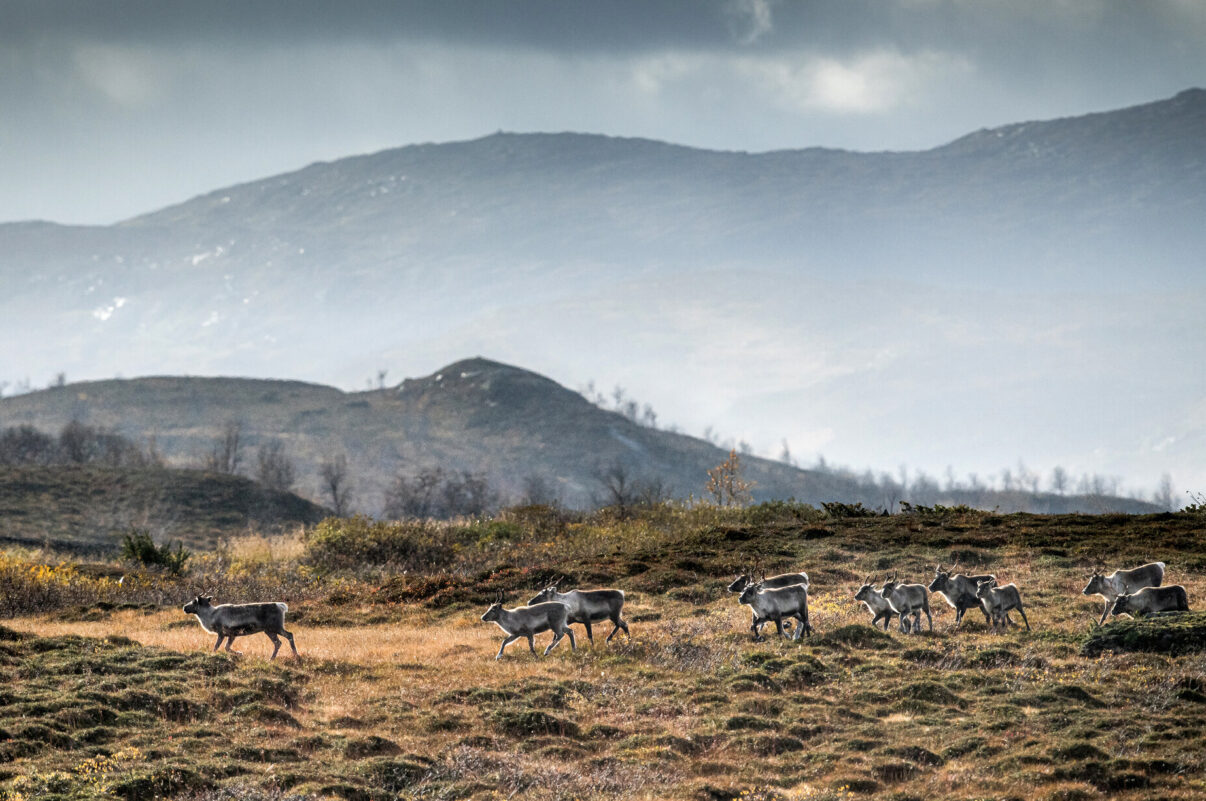
New name, exciting new future
Rewilding Europe’s “Swedish Lapland” rewilding landscape has been renamed “Nordic Taiga”. As Rewilding Europe’s Swedish partner, Rewilding Sweden began stepping up its rewilding efforts in northern Sweden in late 2022, which have so far primarily focused on ensuring the free flow of water in rivers, and enhancing connections between rivers and surrounding landscapes. The distinctive and emotive new name better reflects the location, direction and vision of the team’s work, positioning Rewilding Sweden well for future growth and scaled-up impact.
“The name Nordic Taiga, which is both natural and exciting, resonates with our efforts to rebuild healthy, dynamic landscapes where both wildlife and people can thrive,” says Rewilding Sweden’s Director and Team Leader Henrik Persson. “Rewilding Sweden envisions a wilder Nordic Taiga landscape where revitalised natural processes increasingly shape landscapes, delivering wide-ranging benefits such as enhanced biodiversity, clean air and water, human health and wellbeing, carbon sequestration, and sustainable livelihoods.”
“The name Nordic Taiga, which is both natural and exciting, resonates with our efforts to rebuild healthy, dynamic landscapes where both wildlife and people can thrive.”
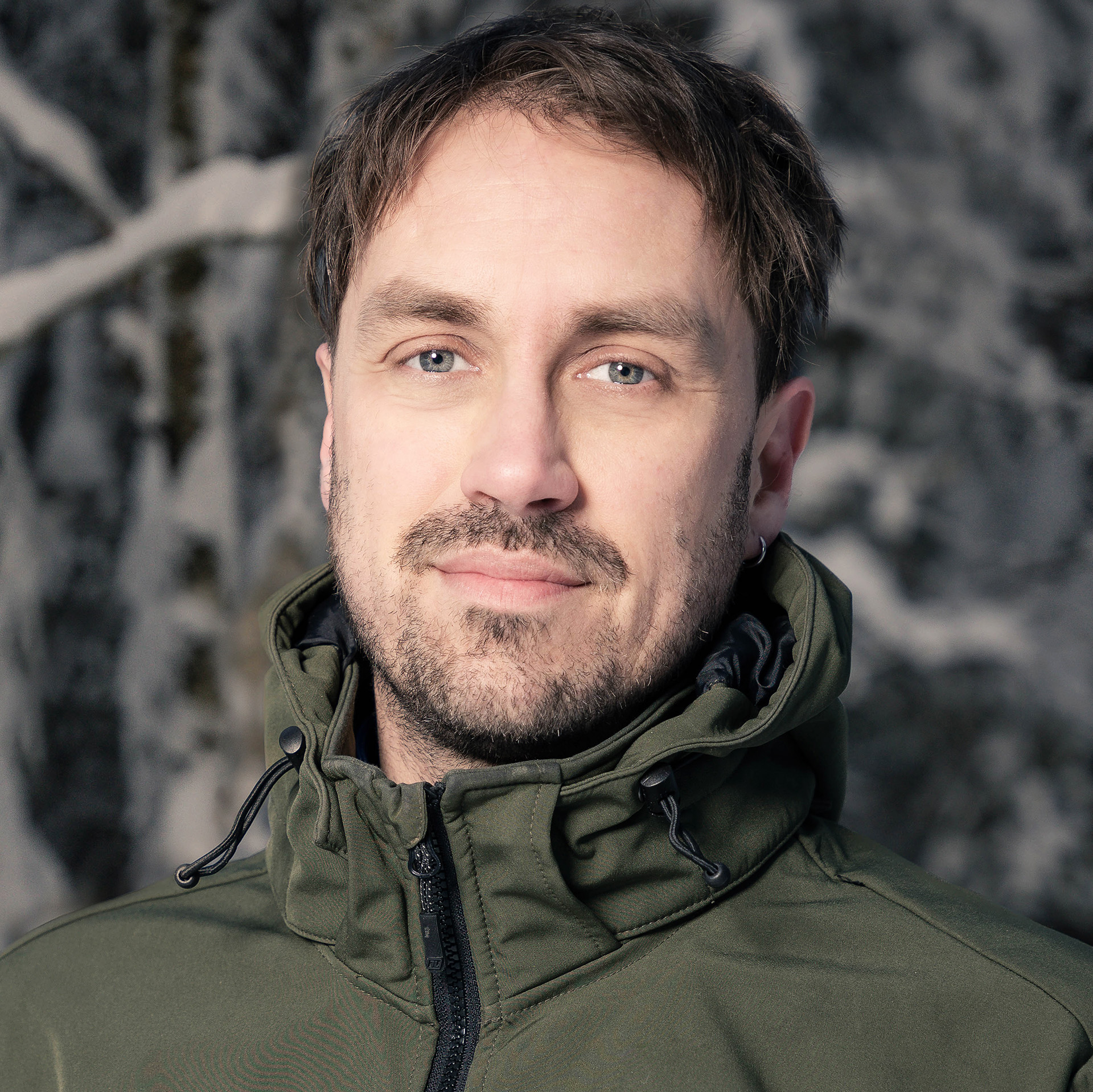
Henrik Persson
Rewilding Sweden’s Director and Team Leader
A unique and vibrant landscape
The 1.75 million-hectare Nordic Taiga rewilding landscape – located in the cultural region of Sápmi in northern Sweden – is a sweeping expanse of coniferous forest and peatland, bisected by myriad rivers and bordered by mountains and the Baltic Sea. Its vastness still allows water, trees, and wildlife to shape the landscape and people’s lives, including the indigenous Sámi people, whose livelihoods are entwined with semi-wild reindeer and their seasonal migrations.
Sweden’s Nordic Taiga, which is part of a far more extensive taiga region that extends across northern Scandinavia and into Russia, is renowned for its abundance of iconic wildlife, such as Eurasian elk (moose), Eurasian lynx, brown bears and wolverines. Large reindeer herds migrate between the mountains and the Baltic Sea coast, passing through the largest remaining tracts of old-growth taiga forests left in Europe, where three of Europe’s largest untamed rivers still flow freely.
Revitalising the Nordic Taiga
Despite the natural and cultural value of the Nordic Taiga rewilding landscape, the impact of human activities here has been long and intense. Over 90% of forests are industrial plantations, clear-cut every 60 to 80 years, leaving only isolated patches of old-growth forest essential for native biodiversity, carbon storage, climate regulation, and recreation. Rivers are mostly dammed, waterways have been altered for historical timber transport, and wetlands drained – all leading to habitat loss and limited space for wildlife to fulfill their essential ecological roles. While most keystone species are still present in the landscape, populations are often unnaturally low and constrained by limited space and degraded, fragmented habitats.
The Rewilding Sweden team are working to heal the Nordic Taiga by enhancing natural processes and supporting wildlife comeback, restoring habitats for keystone species such as reindeer and freshwater pearl mussels in forests, wetlands, and rivers through a “waterscape” approach to landscape rewilding. The aim is to develop blue-green corridors for wildlife by enabling the natural, free flow of water in rivers – for example, by removing dams and other infrastructure – and strengthening the connection between rivers and surrounding landscapes.
Close collaboration
For rewilding to be successful, it has to provide socio-economic benefits, as well as ecological ones. The Rewilding Sweden team are working closely with Sámi communities to develop nature-based economies and support reindeer grazing, which is essential for maintaining biodiverse and climate resilience. This shows how sustainable grazing and cultural practices can work hand in hand with rewilding efforts to build healthy, functional ecosystems.
In the Nordic Taiga rewilding landscape and beyond, climate change and industrialisation have disrupted reindeer migration routes and damaged grazing lands, forcing Sámi reindeer herders to use supplementary food and road transport. The restoration of blue-green corridors – in which healthy ecosystems provide more lichen and the natural tree cover is less dense – will help the reindeer herds of the Sámi move through the landscape more easily, and boost the amount of natural food available to them to eat during the winter.
